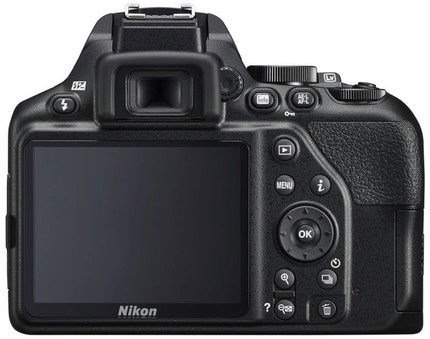I hate to write similar articles so close together, but it seems that the Z introduction coupled with Nokishita—a typically credible source—now reporting a September 28th launch for a Nikon D3500, has brought all kinds of new questions to me.
I'll just say right up front, I don't have the answers you're looking for.
Here in the US, the D3400 is Nikon's best selling ILC, by far. It also tends to produce the most sales dollars overall from any model. Thus, it's an important product. And today Nikon "updated" it to the D3500, to be sold at the same price as the D3400 was (US$499 with kit lens).

Updated is in quotes because it appears that Nikon has simply de-contented the D3xxx model once again. The flash button moves to the back of the camera, the Fn button is gone, the front IR receiver is gone. On the back of the camera, the buttons and controls all move, and Live View goes back to being a lever up top.
The basic specs of the camera don't change, though. It's the same sensor with the same properties, and virtually no specification changes (Nikon did add the Flat Picture Control, and the CIPA battery rating goes up to 1550 shots from 1200). The body uses D5600-style construction techniques now, which simplify assembly and take a small bit of size and weight away.
So why these changes?
Bean counters designed this new camera. It really isn't a new camera. It's the third generation of the D3300 parts, but with increased emphasis on how to build it more cheaply. You'll notice that the buttons cluster now along the top back, and down a panel on the back: simpler interconnects during assembly. Apparently the D3500 designers only got part of the design fax from the Z6/Z7 designers: we get the four-button cluster at the bottom, but it's not ordered the same, and there are other button changes, as well.
I've said for a long time that you want a feeder system when you build lower end cameras at the D3xxx/D5xxx price point. If someone learns the Drive Mode button is top right of a four button cluster, then moves to a higher end camera where it's the lower right, that's cognitive dissonance designed into the product.
More important, though, is the signaling that Nikon is doing.
By burying the D3500 press release launch right after the big Z6/Z7 launch parties, Nikon has sent a strong signal to the market that they're not near ready to disclose how they'll handle crop sensor mirrorless.
So let's examine two things.
First, the Z lens road map. That road map has 11 undefined slots on it, three in 2020 and eight in 2021. We know from talks with Nikon executives that some of those undefined lenses will be a new lower cost lineup of Z lenses, including pancakes. It's entirely possible that crop sensor Z lenses might be in the pipeline, but wouldn't appear before 2020.
Second, the prototype parade. As I've outlined before, Nikon worked through three different mirrorless crop sensor choices. I'll add a bit more specificity here: (1) a small and slightly different (more bulbous) design for EOS M like cameras with a new mount; (2) a smaller variation on the D3xxx, using the existing DX mount and more AF-P lenses; and (3) a high-end DX model (e.g. D500-level) with the Z mount.
The full frame Zs' final design presents a bit of a problem. Because the Z6/Z7 bodies are already down at the D7500 size and weight, the market expectations would be that any crop sensor mirrorless Nikon comes out downsized even more. That suggests #1 as the most likely choice. But look at Nikon's lens situation: the Z lenses, coupled with what we know about a few more F-mount lenses working their way to production, pretty much maxes out what Nikon can do with lens releases in a year. We're talking eight a year now, which is above their historical average in the DSLR era, and as much as anyone seems capable of doing; because lens design to release takes about three years, it implies 24 lenses are in some stage of development at any given time. Sure, you can speed that up some, but remember, Nikon and all the other camera companies are working in an environment with declining volume, so you don't want to just throw more resources at the problem.
Personally, I think we'll get some form of #1 and #3. A Z5 could be a D500-like camera, possibly coupled in release with a Z9 that's a D5-like camera. But we wouldn't see that until 2020 at the earliest, I think. Meanwhile, the D3500 gives the low-end a DSLR to hold serve for another year, with more cost flexibility if they have to brute force the market by price. That gives Nikon some breathing room to make a more considered and well thought out crop sensor mirrorless launch.
Unfortunately, that doesn't make DX any better than it already is (and has been for some time), nor does it present us with any new DX lenses to help bolster the cameras. Nikon has been slow-rolling DX pretty much since 2011, when the quake and floods disrupted a lot of their plans. It looks like that slow rolling will continue for the foreseeable future.





